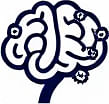Economies of Scale as a Mental Model
 by Lilian Nienow
by Lilian Nienow
Economies of scale help simplify how efficiency grows with size in business and daily life. This mental model aids in making smarter decisions for growth and resource use, offering practical insights for professionals and learners alike.

Economies of scale represent a key concept in thinking about growth and efficiency. This mental model shows how larger operations can reduce costs per unit. For instance, a factory producing more items might see lower expenses through better resource use.
In business, economies of scale often appear when companies expand. A small bakery might struggle with high costs for ingredients and space. But as it grows, buying in bulk lowers the price per item. This idea extends to various industries, from manufacturing to services.
Consider technology firms that build software. Early development involves high fixed costs, like hiring experts and creating platforms. Once established, adding users costs little extra. This pattern highlights how scaling up leads to advantages.
Applying this mental model personally can improve daily decisions. Someone learning a new skill, such as cooking, might start with expensive tools and time. With practice, the effort per meal decreases, much like a business operation.
Why This Mental Model Matters
For professionals in strategy, mental models like economies of scale offer tools for planning. Leaders can assess if expanding operations will cut costs or improve outcomes. In psychology, it relates to cognitive development by showing how repeated actions build efficiency in the brain.
Take education as an example. A teacher preparing lessons for a class of ten might spend more time per student than for a larger group. The initial effort stays the same, but the benefit spreads out, creating gains similar to business scenarios.
In cognitive terms, this model encourages viewing learning as an investment. Early stages demand more energy, but over time, knowledge integrates smoothly. This approach aids lifelong learners in managing their development.
Practical Applications in Business
Businesses use economies of scale to compete effectively. A retail chain might negotiate better supplier deals by ordering larger quantities. This reduces overall expenses and boosts profits.
Startups often face challenges here. They begin with limited resources, making costs high. As they grow, scale allows them to optimize processes. For example, an online store might automate shipping for bigger orders, cutting manual work.
This mental model also applies to global markets. Companies entering new regions can leverage existing infrastructures to minimize setup costs. It becomes a strategy for sustainable expansion.
Extending to Personal Growth
On a personal level, economies of scale can guide habits and routines. Building a fitness routine might require significant initial effort, like researching exercises and scheduling time. Once established, maintaining it takes less daily input, yielding better health results.
In finance, individuals saving money see similar effects. Starting a savings plan involves setting up accounts and tracking budgets, which demands upfront work. As the habit forms, the process becomes routine, leading to greater financial security over time.
Learners in psychology might find this model useful for skill acquisition. Practicing a language daily builds fluency with diminishing effort per session. It underscores how persistence creates efficiency in cognitive tasks.
Potential Drawbacks and Considerations
While beneficial, this mental model has limits. Not all scaling leads to gains. A business growing too quickly might face issues like poor quality or overburdened staff. Recognizing these risks helps in balanced decision-making.
In personal contexts, over-relying on scale could ignore individual needs. For instance, expanding social networks rapidly might dilute meaningful connections. Awareness of such factors ensures thoughtful application.
To use this model effectively, individuals should evaluate their situations. Ask if increasing size or repetition will truly lower costs or efforts. This critical thinking enhances its value in everyday scenarios.
Real-World Examples
History offers clear cases. Automobile manufacturers like Ford revolutionized production by assembling cars in large volumes, reducing per-unit costs dramatically. This shift not only lowered prices but also made vehicles accessible to more people.
In modern times, streaming services exemplify this principle. Platforms invest heavily in content creation initially. As subscriber numbers rise, the cost per viewer drops, supporting ongoing innovation.
For learners, adopting economies of scale means focusing on foundational skills first. Mastering basics in a field like writing allows for faster production of quality work later, mirroring business efficiency.
Ultimately, economies of scale serve as a versatile mental model. It bridges business strategies with personal cognitive development, helping curious minds build better frameworks for success.
